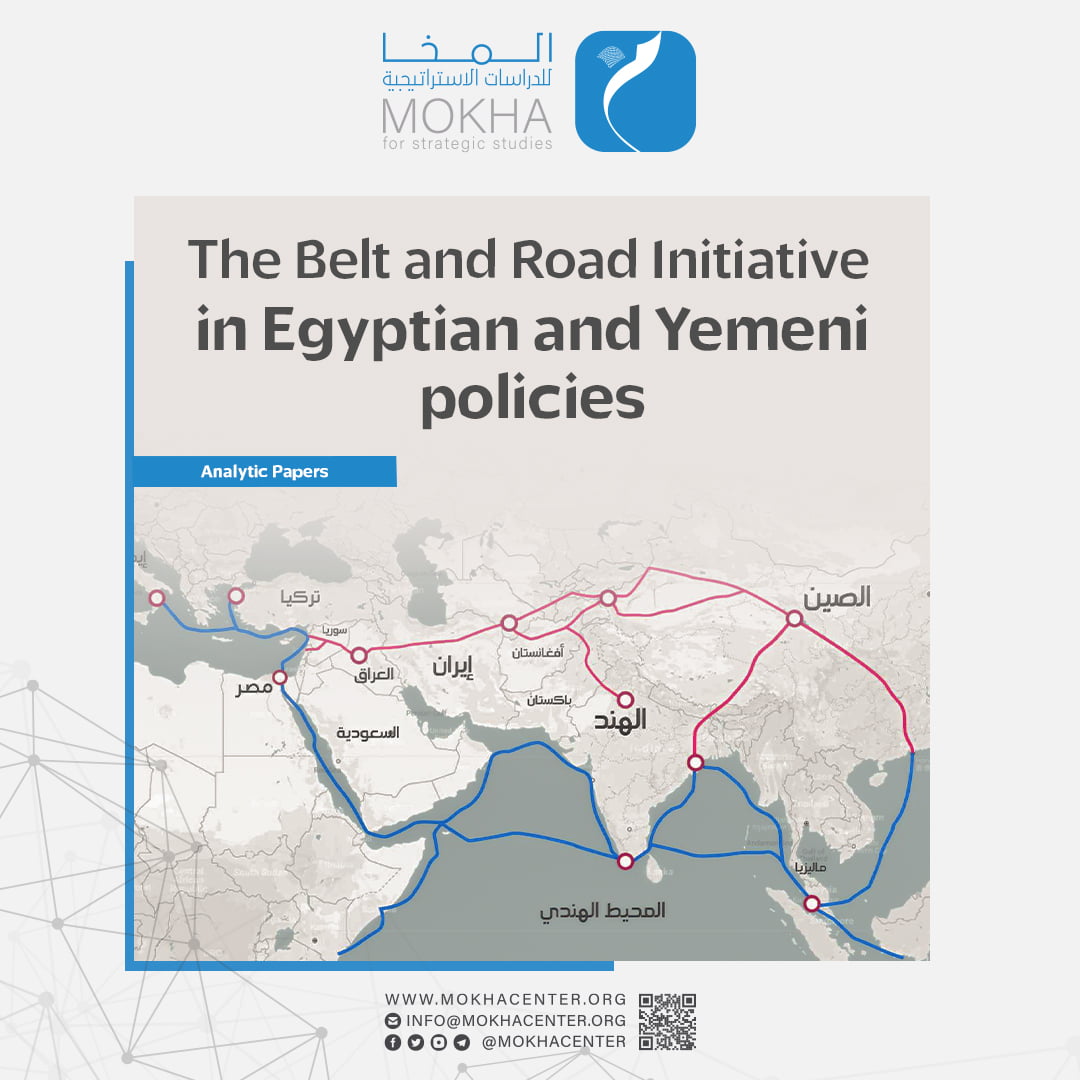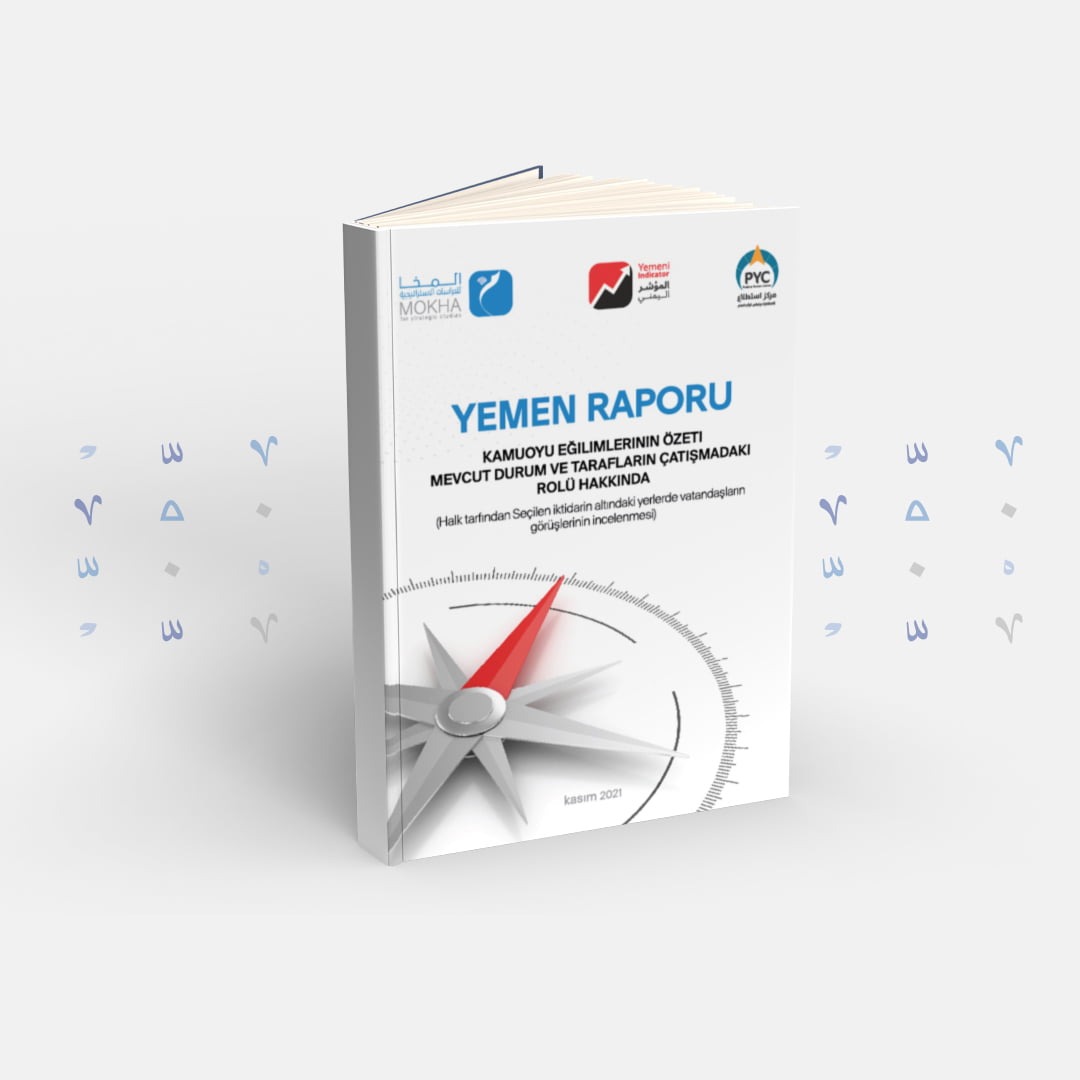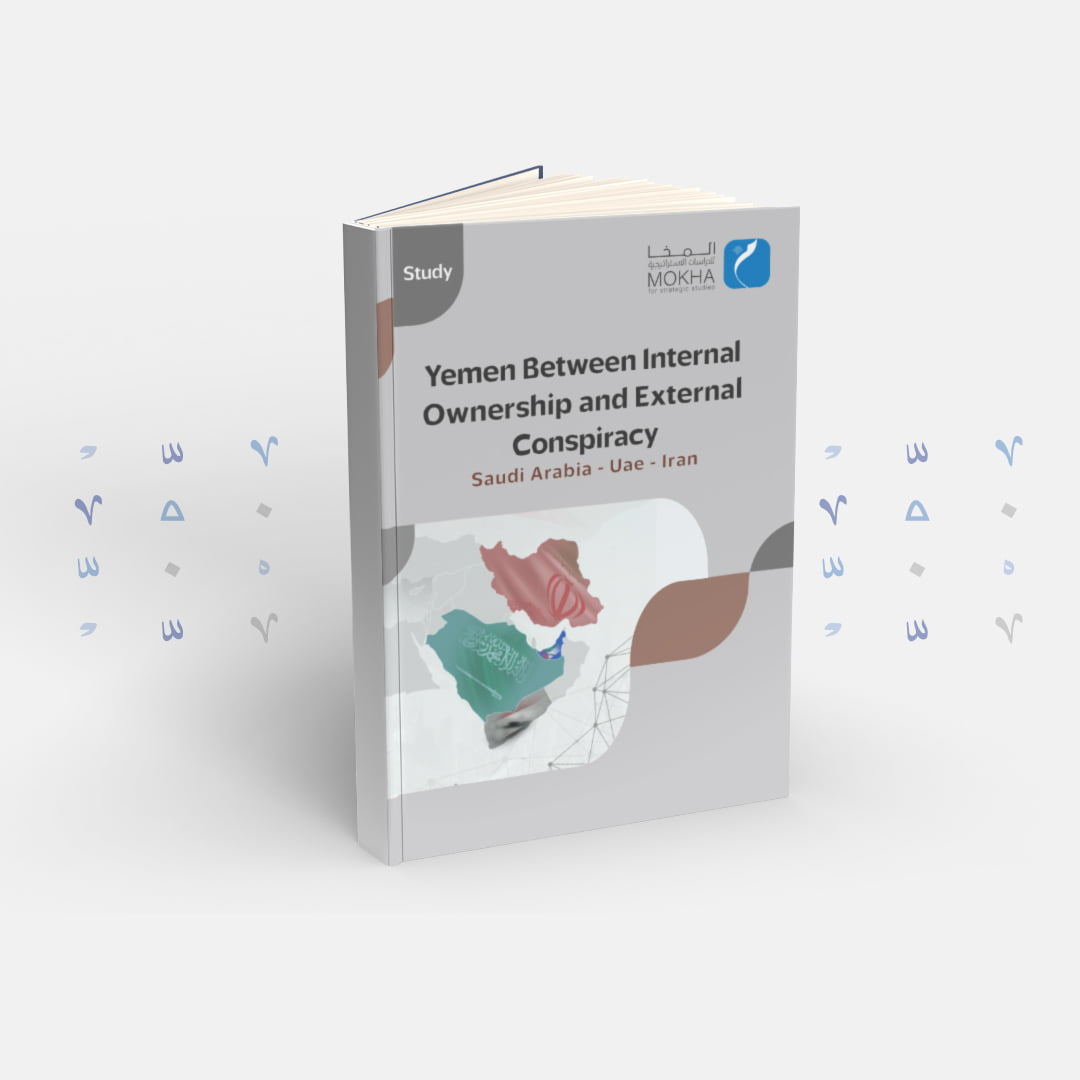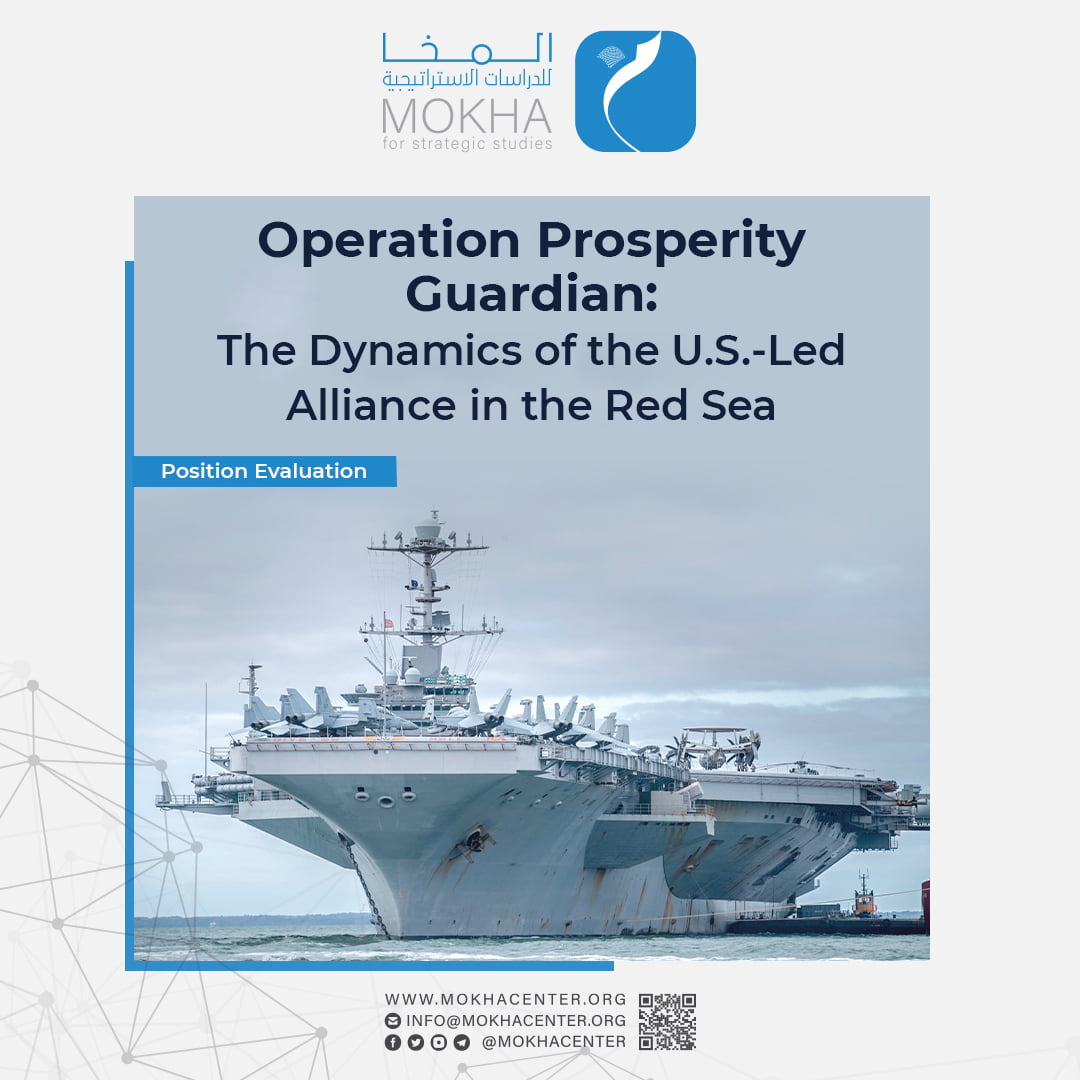The Belt and Road Initiative in Egyptian and Yemeni policies

| Getting your Trinity Audio player ready... |
Abstract:
As the “Belt and Road Initiative” (BRI) advances, security challenges and trade competition intensify, sparking debate about Yemeni and Egyptian policies toward the shipping line and their capacities to bolster their respective stages. Since the project’s inception, it has faced security and trade challenges within the Red Sea. These issues emerged with the collapse of security at the sea’s southern entrance, coinciding with the launch of the India-Europe line project on the other hand; thus, the challenges are distributed at the security and commercial competitiveness levels.
China’s strategy is to strengthen its bilateral and multilateral relationships, increasing the number of participating countries in the initiative. This approach aims to create interdependence among the involved nations. Additionally, China has continued the China-Arab Forum and implemented trade and investment policies with Egypt and Yemen as part of the initiative.
Given the geographical and political realities, the Red Sea is a strategic depth for Egypt and Yemen. It is situated near several strategic areas that extend Arab national security, particularly for the Gulf region. As a subsystem within the Middle East, it is close to the Nile Basin, Horn of Africa and Indian Ocean. The security of the Red Sea is a strategic interest for Saudi Arabia. Amid threats from Iran to obstruct or even close the Strait of Hormuz, Saudi ships would still have significant access to the Arabian Sea and the Indian Ocean through the Red Sea. Saudi Arabia can rely on the Red Sea to transport oil westward, reaching the Mediterranean Sea via the Suez Canal and the Indian Ocean via the Bab al-Mandab Strait — both are strategic points for controlling navigation in the Red Sea.
Politically, the ability of China, Egypt and Yemen to create competitive advantages while implementing the Belt and Road Initiative commitments is crucial. These countries are in key areas along the sea corridor, particularly at the Red Sea entrances (Suez Canal and Bab al-Mandab). The importance lies in their progress in fulfilling specific obligations and the impact on each country’s political situation.
This paper analyzes the contexts of the Belt and Road Initiative, and its intersection with Egyptian and Yemeni interests, and it also explores opportunities for tripartite cooperation (representatives of employers, employees and the government work in collaboration to try and resolve issues). This paper also examines each country’s ability to take on transportation, developmental and regional stability projects, plus the potential to form a political or security framework to mitigate challenges. The initiative’s impact on internal stability in Yemen and Egypt is also considered.
The Belt and Road Initiative and its Political Context:
In October 2013, China announced the Belt and Road Initiative as a framework for cooperation between Asia and Europe. The term “belt” refers to the land route from China to Europe, while “road” describes the maritime network connecting major ports in the Indian Ocean, Middle East, North Africa and Europe. This initiative aims to integrate trade routes, giving the Chinese project a competitive edge. Over the years, more than 100 countries and international organizations have joined the initiative, making it a significant global movement. It has been recognized by the United Nations General Assembly and the UN Security Council in their key resolutions.
The “One Belt, One Road” initiative was launched to integrate road and railway projects with navigation and maritime transport networks. It is based on principles of the free market, transparency, and global economic integration, aiming for standardization, facility interconnection, and the facilitation of trade and investment. This initiative seeks to create a unified platform between countries, enhancing capabilities to meet the essential needs and development requirements of developing nations. China describes the initiative as a way for the world to share common benefits and freely transfer projects, avoiding monopolies.
To facilitate trade and investment, the Belt and Road Initiative aims to remove investment and trade barriers, establish free-trade zones and promote trade balance. The initiative supports the easy exchange of surplus goods between member states, stimulating productive sectors through market expansion. However, it faces challenges such as differing growth rates, high debt levels in many countries, as well as economic and financial distortions. Additionally, infrastructure and policy deficiencies in countries along the Belt and Road corridors hinder trade and foreign investment.
Estimates put the trade volume in these economies at only 30% of their capacity, and foreign direct investment falls short by 70% of the target needed for success. Therefore, the initiative’s significance lies in facilitating the movement of goods and investments to achieve goals that enhance trade contributions, reduce poverty and increase development opportunities. By easing trade restrictions and increasing market flexibility, trade policies aim to accommodate changes in trade volumes among countries. This approach seeks to transform the initiative into a collective project that ensures monetary and financial support for investment purposes.
The initiative aims to achieve structural integration across projects to form a linked foundation by land, sea and air. It also seeks to enhance the coordination of policies, plans and standards to create a more harmonious and standardized infrastructure. Through this initiative, Chinese policy reflects an aspiration to lead global growth by building bilateral and network relations with countries participating in the Belt and Road groupings, the Shanghai Cooperation Organization and the BRICS+. These blocs serve as a lever for mutual dependence among these groups, positioning the Chinese economy as a key driver of global growth.
To show its support of the initiative, China had forged agreements with various countries and international organizations. By March 2019, China had signed 173 cooperation documents, including 125 with countries, 29 with international organizations and 17 with Arab countries. The initiative has expanded to Europe, Africa, Latin America and the South Pacific region. This expansion facilitates the rapid development of the initiative’s structure and the formulation of an ambitious plan to compete with the United States. It aims to achieve financial integration, freedom of trade and the movement of individuals.
The initiative aims to expand economic and infrastructure cooperation across continents through strategic land and sea routes, bringing China closer to the world through investments and infrastructure projects. Over the past 10 years, the Middle East’s share of these investments has grown to an average of 23% of Chinese participation. The planning for the Belt and Road Initiative goes beyond the maritime trade route, targeting an increase in the gross domestic product by 3.4% for participating countries, according to World Bank projections.
The 10th anniversary of the initiative’s launch provided an opportunity to evaluate institutional progress and promote future projects. The regular holding of the Arab-Chinese Forum is a key lever of the Belt and Road Initiative, as it helps consolidate understanding of ongoing challenges in bilateral and collective relations. At the forum summit in May 2017, under the slogan “Hand in Hand to Advance the Construction of the Belt and Road,” Chinese President Xi Jinping highlighted that the concept of the road dates back more than a thousand years, based on the principles of benefit, learning and mutual advantage. These principles form a foundation for addressing growing human needs and coordinating the policies of member states based on shared prosperity.
Summit diplomacy has also played a crucial role in facilitating the tools and processes of the initiative, especially through repeated meetings of presidents to set directions for commercial and industrial affairs. Among the founding members, Egyptian President Abdel Fattah El-Sisi has participated in all summit meetings and held bilateral meetings with the Chinese president to finalize the legal frameworks necessary for joint projects. Besides official meetings, public diplomacy has emerged to create a conducive environment for production and consumption policies, based on shared cultural areas between peoples. This has formed a suitable formula that integrates technology and culture to strengthen mutual dependence.
Tripartite Relations: China-Egypt-Yemen:
Having an understanding of the political relationship between China, Egypt and Yemen is crucial to evaluate the opportunities and challenges facing joint projects. It is important to consider additional contexts beyond the discussions about the initiative, particularly those related to cultural and demographic backgrounds. Yemen and Egypt hold significant importance in the Belt and Road Initiative due to their coincidental and strategic locations. Both countries’ coasts and ports serve as central hubs in global trade routes, enhancing the feasibility of establishing multiple projects with comparative advantages. This is particularly beneficial given their proximity to consumption areas in East Africa and the Mediterranean Sea basin.
Thus, Arab-Chinese relations are now paving the way for multilateral partnerships and swift responses to look after the needs of developing countries in such sectors as agriculture and food industries, and the transfer and localization of technology.
- Egyptian Policy Toward the Belt and Road:
Throughout the past decade, Egypt focused on developing its logistics sector to integrate with the Chinese services sector and to meet the needs of international trade in the Middle East. The goal is to build an alliance framework with China rather than just a traditional partnership.
As part of this effort, Egypt has invested around $100 billion across four key areas:
- Suez Canal navigational corridor
- Development of infrastructure for international logistical services
- Establishment of special industrial and economic zones in canal cities
- Expansion of the road and railway network as well as connectivity corridors with neighboring countries
In terms of foreign policy, Egypt views the Belt and Road Initiative as a means to strengthen relations with countries of the Global South, echoing the legacy of the Non-Aligned Movement, which played a significant role in global politics. The Suez Canal axis presents opportunities for industrial development and allows for preferential treatment of Chinese companies, fostering an economic alliance between Egypt and China.
In its relations with Egypt, China has viewed the country as a key partner in the Belt and Road Forum. This was evident during the second summit held April 25-27, 2019. The frequent bilateral meetings highlight the breadth of mutual interests and the exchange of development experiences. As part of balancing its foreign policy, Egypt aims to build a strategic relationship with China and coordinate planning policies. Egypt’s participation helps establish the initiative and prepares the industrial and development environment to adapt to transportation and industrial service conditions.
The importance of the initiative for Egypt is linked to several factors. Firstly, it supports Egypt’s geographical position in international trade by enhancing the role of the Suez Canal in maritime transport between the Indian Ocean and the Mediterranean. Additionally, the initiative contributes to the development of the Suez Canal Corridor projects, with the Suez Canal Economic Zone being one of the initiative’s most important centers. The Belt and Road Initiative facilitates easy integration with ports and industrial areas, creating a vital corridor for goods between East Asian, European and American markets. Given its strategic location and expansive industrial policy, Egypt holds a comparative advantage in maritime transport projects.
In “Egypt Vision 2030 for Sustainable Development,” Egypt has aligned its regional planning with the priorities of the Belt and Road Initiative. This integration aims to create a stable climate for economic interests and political relations, fostering an environment of mutual respect. The goal is to harmonize development priorities, transitioning from ideas to actionable projects. Egypt actively participates in the initiative’s structural construction, especially through the Asian Infrastructure Investment Bank, invests in the trade corridor’s infrastructure and engages in multilateral meetings. Additionally, Egyptian policy includes consultations with China to achieve a ceasefire in the Gaza Strip and address the Palestinian issue, as these efforts are seen as gateways to regional stability.
The Egyptian government has incorporated the Suez Canal Axis project into the joint economic and executive plans of all ministries, positioning it as a global commercial center. This project covers the eastern Delta, Sinai and Canal regions, ensuring integrated resources and easy movement on both sides of the Suez Canal, with convenient access to Cairo. The national economic plan aims to achieve economic balance, spread development, reduce unemployment and attract foreign investments by covering various geographical sectors. The New Suez Canal project, which is an interim phase within the “Suez Canal Axis Development” plan, aims to increase national income and create direct and indirect job opportunities. These efforts focus on developing the manufacturing industry, relocating a large population to the Canal and Sinai areas, as well as boosting economic growth. The new canal projects and tunnels linking the east and west of the Canal, designed for cars and railways, are key components of this development strategy.
- Yemen and the Belt and Road Initiative
Yemen was engaged in the early stages of the Belt and Road Initiative (BRI) from its inception in 2013, and it officially joined the initiative in 2019. Historically, Yemen has played a significant role in trade along the Indian Ocean, making it an ideal partner for the BRI. The country’s strategic location along the Bab al-Mandab Strait and the Suez Canal, coupled with its ports in Aden, Hodeida and Mokha, enhances its importance in the initiative by offering safe and speedy transportation routes.
Yemen’s inclusion in the BRI stemmed from extensive Chinese-Yemeni consultations focusing on two main tracks:
First track: This involves preparing to rebuild Yemen by initiating peace efforts to end the war, coupled with a comprehensive investment plan to be executed in a secure environment.
Second track: China has engaged with various Yemeni factions, maintaining dialogue with both the internationally recognized government and the Houthi group controlling the capital, Sana’a. By fostering balanced relations with all parties, China aims to facilitate political resolution and conflict settlement.
Yemen’s political landscape has been deeply divided between the legitimate government and the Houthi rebels. This division delayed Yemen’s initial participation in the BRI. The ongoing war weakened the ruling system, caused diplomatic stagnation and hampered the development of a stable foreign policy. Despite these challenges, Yemen signed a memorandum of understanding with China in October 2019, officially joining the BRI. China’s immediate focus has been on engaging with all conflict parties, laying the groundwork for national reconciliation and political rapprochement.
According to its aid policy, China linked contributions to development programs to get closer to resolving the Yemeni crisis. This approach is critical for integrating Yemen into the Belt and Road Initiative (BRI), given that the current unstable environment is not conducive to developing trade. As of 2023, trade between the two nations remains at $3 billion, which highlights the challenges of launching investment and development projects amid ongoing conflict. The current focus is on preparing for the post-conflict phase, maintaining a shipping line between China and Aden and facilitating the movement of citizens.
Several factors have disrupted Yemen’s foreign policy, leading to a decline in national unity and escalating conflicts between imamate and republic factions. This decline, coupled with the militarization of areas near the Yemeni coast, has reduced the importance of seaports, many of which are now controlled by the Houthi militia. This crisis is compounded by U.S. support for continued Israeli aggression against Gaza, leaving both Yemen and Egypt uncertain about the future of their development plans and regional security.
The persistent political division in Yemen and deteriorating security conditions in the Red Sea hinder the efficiency of commercial projects between the Suez Canal and Yemeni ports, making them less attractive for major investments. This security imbalance affects not only Yemen and Egypt but also all ports along both banks of the Red Sea, disrupting a vital point of the BRI. Additionally, disparities in the infrastructure development for trade and industry between Yemen and Egypt impact the integration of development paths within the initiative. Thus, there is a need to align port rehabilitation efforts in both countries to optimally leverage their geographical advantages.
These developments coincide with the legacy of Yemeni-Egyptian relations during the Republic period, where Yemeni-Egyptian relations did not witness a break, as the two countries maintained a degree of cooperation sufficient to begin a strategic path. However, Yemen entered a state of political turmoil — since 2011. It led to the emergence of a dispute over the relationship between the two countries, as the conflict between the two sides of the Republic and the Imamate took on regional and international dimensions and had a clear role in the political and sectarian division, which placed restrictions on the development of bilateral relations.
The International Competitiveness of the Belt and Road Initiative and its Challenges:
Estimated statistics indicate that the countries participating in the Belt and Road Initiative (BRI) collectively account for 30% of the global GDP. This positions them competitively, as they encompass 70% of the world’s population and thus possess significant market-consumption power. The production and consumption advantages of these countries create favorable conditions for shared interests, making the BRI a unifying framework. The diverse membership of BRI countries, many of which also belong to other organizations, such as the Arab Chinese Forum, the Shanghai Cooperation Organization and the BRICS Group, helps strengthen their cooperative efforts and enhances their influence in the global economy.
However, the BRI faces several challenges. Many participating countries struggle with debt, which diminishes their investment attractiveness, and there is currently no clear strategy for addressing these debts. Additionally, governance issues pose significant risks. Concerns about loans and debts can hinder bilateral cooperation with China and limit the initiative’s overall effectiveness. To overcome these obstacles, it is crucial to integrate investment and trade, enhancing the BRI’s appeal and competitiveness against other global projects.
The flexibility of the Chinese economy plays a vital role in supporting cooperation, fostering mutual interests and reducing monopolistic tendencies, thereby mitigating some of the initiative’s challenges.
The volatility of the international situation and slowing economic growth are raising transportation and service costs, making it difficult for Yemen and Egypt to navigate their security and economic challenges. Despite these difficulties, the political framework of the Belt and Road Initiative (BRI) remains a crucial platform for sustaining interests among member states. It can help mitigate financial crises and form alliances against international monopolies by focusing on high-quality projects and direct investment to strengthen collective relations. This approach is supported by the significant growth of China’s trade with BRI countries, which increased from $1.04 trillion in 2013 to $2.07 trillion in 2022, reflecting an annual growth rate of 8%. This growth excludes the two years impacted by the COVID-19 pandemic, during which investment fell, countries struggled to repay debts to China, and conflicts between the West and China intensified.
Amidst security instability and ongoing conflicts, Yemen and Egypt, along with the BRI, face additional challenges from such emerging alternatives as the Silk Road corridor through Iraq and Turkey. This new route reshapes the maritime transport contributions of the Arabian Sea and Red Sea regions. Additionally, the decline in exports from many regional countries further weakens the current viability of the BRI
In recent years, alternative projects similar to the Suez Canal have surfaced. There are renewed discussions about the “Ben-Gurion Canal,” which would connect the city of Eilat on the Red Sea to the Mediterranean; there would be a trade route between India and Europe that passes through the Arabian Peninsula, Jordan and Israel. These projects aim to diminish the Suez Canal’s importance, regardless of their economic feasibility. They align with a Western strategy to reshape international interests in the Middle East, prominently featuring Israel’s integration through commercial and military projects. Meanwhile, the Belt and Road Initiative (BRI) offers a continuous sea route between China and Europe, providing commercial advantages in terms of speed and lower comparative costs.
In October 2023, during the G20 meeting, India and the United States announced an economic corridor between India and Europe through the Middle East. This project, which uses a combination of sea and land routes, aims to rival the BRI. Despite the promotion of this corridor, its economic feasibility is weakened by the need for multiple shipping operations to reach European ports. Additionally, it relies on key partners of the BRI, such as the United Arab Emirates and Saudi Arabia. The unresolved Israeli-Palestinian conflict also poses a significant obstacle to completing the land route through Saudi Arabia and Jordan to Israel.
The Indian Corridor faces competitive disadvantages due to the BRI’s decade-long head start. During this period, the BRI has established a foundational network of relationships among member states and shown progress in trade and direct investment. This is crucial, as India remains on the periphery of alliances led by China and Russia, which dominate global trade and GDP. The Indian Corridor’s Memorandum of Understanding appears hastily constructed, plus it lacks detailed action plans, programs for economic feasibility in transportation and customs, as well as a clear strategy for resolving conflicts, especially in the contentious areas within Israel’s borders.
Conclusion
Despite the strategic advantages of the Suez Canal and the Bab al-Mandab Strait, the regional turmoil in Yemen and Egypt impedes progress in the Belt and Road Initiative (BRI). There is a pressing need for a strategy to resolve the conflict in Yemen, aiming to end the civil war and unify the state. Integrating Yemen into the BRI requires establishing a stable government that represents the Republic of Yemen and developing infrastructure to transform coastal cities into commercial hubs.
China’s neutral stance on the war in Yemen does not mitigate the security instability, as it has not taken concrete steps toward a political settlement. China prefers influential countries to take the lead and views the framework agreement between Saudi Arabia and Iran as a model for Yemen. However, the complexity of the civil war and involvement of various international parties make it difficult for China to contribute to peace efforts effectively. The security collapse at the Red Sea’s entrance further challenges the development of the BRI in Yemen.
Bridging the security gap in Yemen is essential for ensuring the smooth operation of the sea corridor. Establishing collective relations between China, Egypt and Yemen could help calm the civil war. This collaborative framework could facilitate negotiations between Yemeni factions or persuade China to take a more active role. It would also encourage cooperation among BRI countries to create a political and security umbrella for resolving disputes.
Large-scale investments require a joint security and defense system to protect BRI projects, support allied governments and manage resources effectively. Therefore, developing a collective security strategy — potentially involving Egypt, Yemen and other regional countries — is crucial. This strategy should focus on the stability of the Horn of Africa and involve comprehensive dialogue on regional security, supported by the concerned governments and with the participation of China and other BRI partners.
Resources
See: 10 Years After the Belt and Road Initiative. What Do You Know About It?, Amira Al-Arabi, Chinese Embassy Website in Sudan, on: 10/23/2023, available at the following link: http://sd.china-embassy.gov.cn/ara/xwdt/201904/t20190429_6678567.htm See: The “Belt and Road” Initiative between Dream and Living Reality, Dilamy Al-Tahir, China Radio International, on: 5/18/2017, available at the following link: https://arabic.cri.cn/841/2017/05/18/82s213244.htm
Chinese Ambassador to Sudan Mr. “Ma Xinmin” issues an article entitled “Paving the Way for the Belt and Road Initiative for a More Beautiful Future” in the main Sudanese media, Chinese Embassy Website in Sudan, on: 25/4/2019, available at the following link: http://sd.china-embassy.gov.cn/ara/xwdt/201904/t20190429_6678567.htm
Belt and Road Economics: Opportunities and Risks of Transport Corridors, The World bank (Washington DC: The World bank Publications) 2019, p17- 22.
See: The Second Belt and Road Initiative Summit Kicks Off in Beijing: Yemen Joins the New Silk Road, Debriefer, April 26, 2019, available at the following link: https://debriefer.net/news-8078.html
The Republic of Yemen and the Belt and Road Initiative, Saleh Abu Asr, Mokha Center for Strategic Studies, Istanbul – Turkey, 1st ed./2022 AD: pp. 20-24.
10 years after the Belt and Road Initiative. What do you know about it?, Amira Al-Arabi, previous reference.
Text of President Abdel Fattah El-Sisi’s speech at the opening session of the Arab-Chinese Forum, platform, on: 5/30/2024 AD, available at the following link: HTTPS://MANASSA.NEWS/STORIES/17843
The “Belt and Road” Initiative between Dream and Reality, Delmi Al-Tahir, China Radio International, previous reference.
The Second Belt and Road Initiative Summit Kicks Off in Beijing: Yemen Joins the New Silk Road, Debriefer, previous reference.
The “Belt and Road” Initiative between Dream and Reality, Delmi Al-Tahir, China Radio International, previous reference.
President Sisi’s speech at the first Arab-Chinese summit, General Authority for Information, on: 12/9/2022, available at the following link: https://2u.pw/PZMcavKt
Minister of Transport reviews the role of the Arab Republic of Egypt in the Belt and Road Initiative, Maritime Transport and Logistics Sector, on: 10/14/2023, available at the following link: https://2u.pw/EU9QOP5K
President Sisi’s speech at the first Arab Chinese summit, General Authority for Information, previous reference.
See: Belt and Road Economics: Opportunities and Risks of Transport Corridors, The World bank (Washington DC: The World bank Publications) 2019, p 87. The second summit of the Belt and Road Initiative kicks off in Beijing, Debriefer, previous reference.
The Suez Canal enhances the alignment between the Belt and Road and Egypt’s Vision 2030, Al-Arab newspaper, on: 10/7/2023, available at the following link: https://2u.pw/czsiCl3a
Text of President Abdel Fattah El-Sisi’s speech at the opening session of the Arab-Chinese Forum, platform, previous references.
Text of President Abdel Fattah El-Sisi’s speech at the opening session of the Arab-Chinese Forum, platform, previous references.
See: China’s Road to Yemen. Economic Ambitions, Yemen Echo website, on: 10/9/2021, available at the following link: https://yemeneco.org/archives/33547
Chinese Policy towards the Yemeni File One Year after the Saudi-Iranian Agreement: Preparing the Atmosphere for Expanding Engagement, Emirates Center for Strategic Studies, 6/3/2024, available at the following link: https://epc.ae/ar/details/featured/alsiyasa-alsiynia-tujah-almilaf-alyamani-baed-aam-ala-alaitifaq-alsaudi-alirani
Chinese Policy towards the Yemeni File One Year after the Saudi-Iranian Agreement: Preparing the Atmosphere for Expanding Engagement, Emirates Center for Strategic Studies, 6/3/2024, available at the following link: https://epc.ae/ar/details/featured/alsiyasa-alsiynia-tujah-almilaf-alyamani-baed-aam-ala-alaitifaq-alsaudi-alirani Can the India-Europe Corridor Project Compete with China’s Belt and Road Initiative? BBC Arabic, op. cit.
Chinese policy towards the Yemeni file a year after the Saudi-Iranian agreement: preparing the atmosphere for expanding engagement, Emirates Center for Studies, previous reference.




